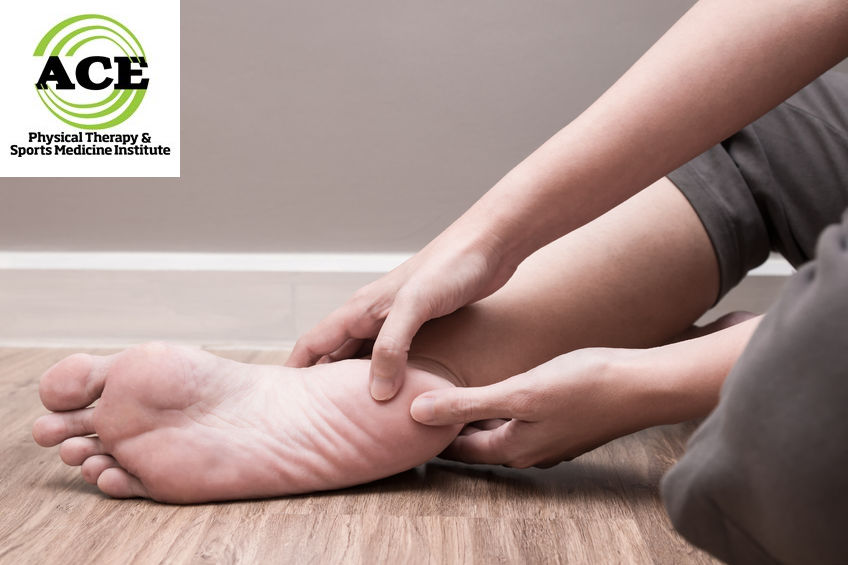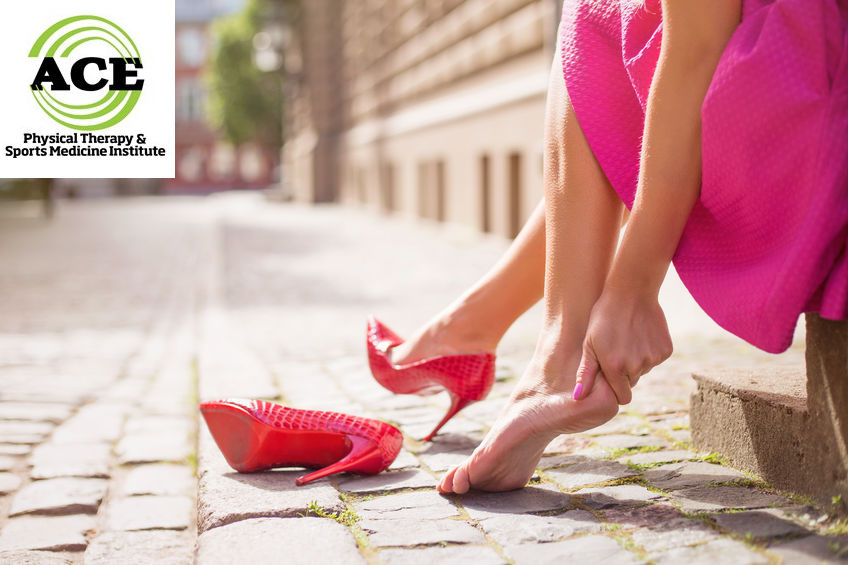HEEL PAIN AND PLANTAR FASCIITIS

Tid Bits of Info
- 1 out of 10 people will suffer from plantar fasciitis in their lifetime
- The annual cost of treatment for plantar fasciitis is well in excess of 200 million dollars
- Night splints have been shown to be very effective and some studies show positive results in 80% of the participants
- Strengthening the hip musculature and stretching the calf muscles must be part of the treatment protocols
- Seek the advice and treatment from a Physical Therapist if you develop symptoms that indicate that you have plantar fasciitis
For some people, the first step out of bed each morning feels like stepping on a stone. Sufferers of plantar fasciitis experience a sharp pain in the heel when they step down. The pain is particularly bad for the first steps of the morning, but it can also hinder tasks and leisure throughout the day. Studies indicate that approximately 10% of the population will suffer heel pain from plantar fasciitis at least once in their lifetime. The good news is that this condition can often be treated successfully in about 8-12 weeks. The Physical Therapist will assess and identify the true source of the problem, and then develop a series of protocols to address the inflammation and eliminate the pain.
The plantar fascia is a thick, leather-like band of connective tissue that spans the bottom or plantar surface of the foot. The band attaches to the heal bone (calcaneus) and stretches across the mid-tarsal bones to the ends of the metatarsals. The plantar fascia inserts into the flexor tendons of the toes. When someone walks, the full body weight has to be supported by the joints of the foot. The joints are supported in many ways but one of the most important stabilizing structures of the foot is the plantar fascia.
When the foot accepts the body weight and someone transitions through the gait cycle to mid stance, the medial longitudinal arch “flattens” out (in most people) and the plantar fascia is stretched. As the person continues through the gait cycle and the heel starts to leave the ground the plantar fascia “snaps” the arch back to its original position which is known as the Windlass Mechanism (read more on this mechanism at www.ACE-PT.org). When the plantar fascia is stretched and “flattens” out there is a significant pull on the calcaneus. The pull can create a localized inflammation of the periosteal covering of the calcaneus that can lead to plantar fasciitis symptoms. If this force persists, the calcaneus can produce more bone at this site and a bone spur will form.
Women ages 40-60 years old tend to be effected more frequently than men. There are numerous causes for plantar fasciitis and most can be addressed and treated successfully. Seeking help from a Physical Therapist can speed up the healing process in most cases. The Physical Therapist will evaluate the patient’s gait and assess the amount of pronation that the patient has when they walk. Excessive pronation is thought to be a cause of plantar fasciitis. Obesity is a major cause of plantar fasciitis. It has been reported that greater than 70% of all sufferers are obese and have been for a prolonged time. Excessive forceful landing is a cause of plantar fasciitis. Runners and athletes that play a sport that involves jumping tend to develop plantar fasciitis more often than athletes that don’t hit the ground with excessive force.

Treatments for plantar fasciitis are numerous and most are successful in an average of 8-12 weeks. Physical Therapists are licensed healthcare professionals that are trained to treat plantar fasciitis. The will evaluate and then design a program with the primary focus of the treatment is to reduce the inflammation which eliminates the pain. The protocols must address the “true problem” that causes the symptoms to develop. Muscle weakness throughout the core and entire lower extremity, lack of flexibility of the calf muscles leading to limited dorsiflexion and the anatomy of the foot ankle are a few of the main causes.
Treatments for this condition should include exercises that will strengthen the core and entire lower extremity. The muscles that extend, abduct and externally rotate the hips need to be addressed. The intrinsic foot muscles help to dynamically stabilize the arches of the foot and this helps to reduce the stress on the plantar fascia. The lack of dorsiflexion is treated with the use of a night time splint and stretching of the calf muscles with a straight and flexed knee. Lastly, many people suffering from plantar fasciitis will benefit from an orthotic device in their shoe. These can be “off the shelf” or custom made and both types are designed to help support the arches of the feet and reduce the tension and stress on the plantar fascia.
Plantar fascia pain can be debilitating and limits someone’s daily function drastically. The most painful time usually occurs as the person gets out of bed and puts their involved foot on the floor or after a prolonged period of sitting. The pain in the heel is often sharp and forces the individual to walk on the ball of their foot. Fortunately, their condition can be treated successfully but it usually takes several months to get the symptoms to resolve completely. Addressing the patient’s muscular weakness, decreased flexibility and possible abnormal anatomical alignment of the foot structure can prevent the symptoms from returning in the future.

























This was THE BEST tutorial ever! Thank you so much & I will be sharing this with everyone I know!
I completely agree with the prevalence of plantar fasciitis among the population. Many people are affected by this injury, but have no idea how to fix it. As mentioned, stretching and strengthening of the lower extremity can be very beneficial for stabilizing the entire leg. I have a few smaller tips that may help control the symptoms until being evaluated by a Physical Therapist. One trick that helps to both reduce inflammation and release the plantar fascia is to roll the foot over a frozen water bottle. Rolling the fascia over a hard surface like a frozen water bottle or lacrosse ball can help break up some of the adhesions that may be present. There are also a lot of options for night splints available online. A smart option would be to consult with a Doctor or Physical Therapist before purchasing. But if you already have purchased splints, it is important to start with a “wearing schedule.” Wearing the splints for only an hour at a time and increasing from there will help you acclimate to the new position of your foot at night. The plantar fascia is very important to the way we walk and for preventing injuries. Please don’t hesitate to consult with a professional if you have any of the symptoms above.
THANK YOU for this lovely spiritual respite.
Plantar Fasciitis has been common in my family and friends. Both individuals who are very active and those who are a bit more sedentary. One of my best friends, who is an avid running gets it from time to time. It is a great reminder for her that she needs to do more cross training and weight training to increase her lumbopelvic strength and also to incorporate more stretching into her daily workouts.